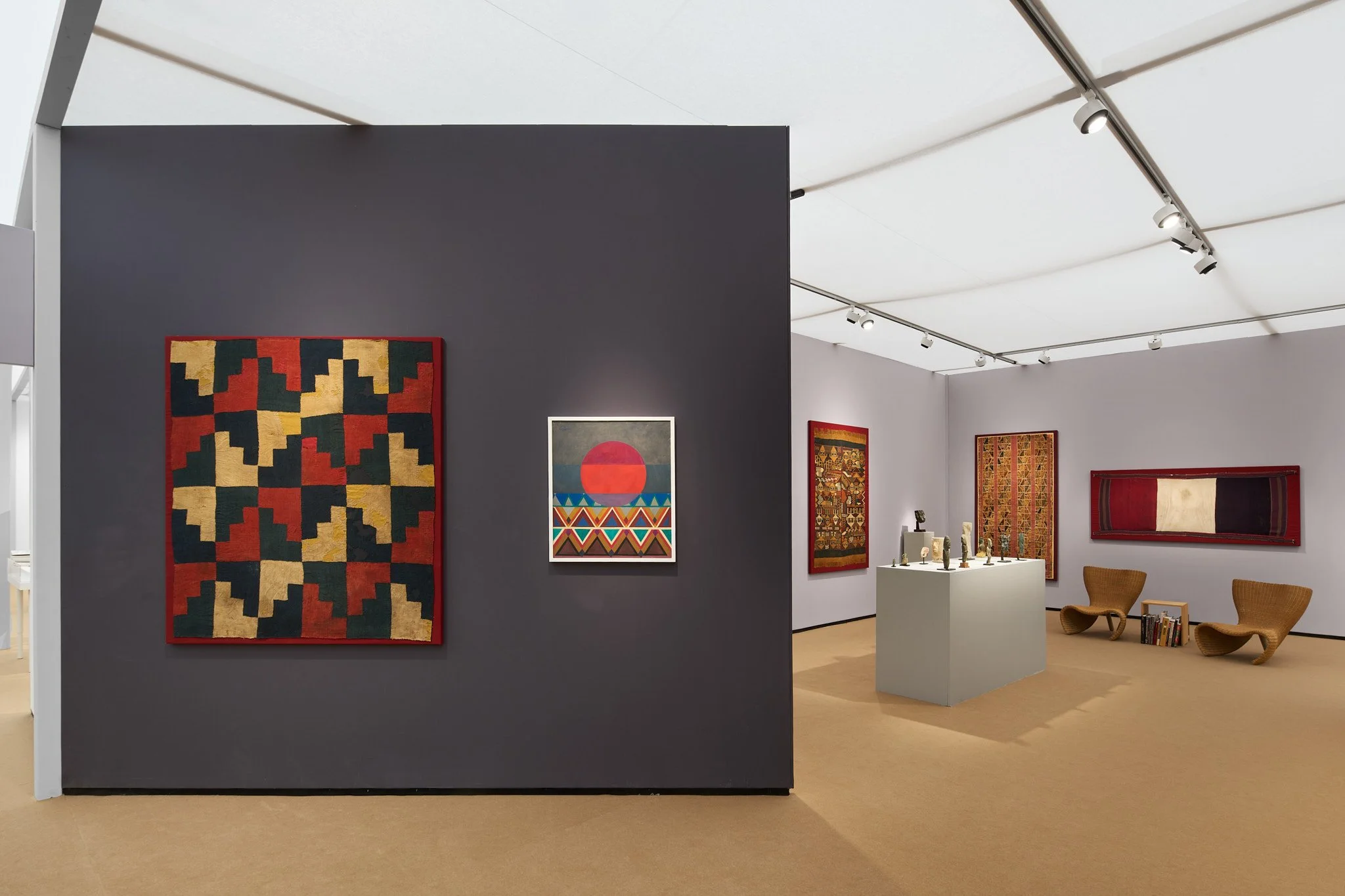Frieze Masters
London, UK
October 15 – 19, 2025
Booth G11





Pre-Columbian art has been a constant source of inspiration for numerous Latin American artists of the 20th century, not only as an aesthetic reference but also as an assertion of identity in response to the hegemonic discourses of Western art. In this context, Zielinsky presents at Frieze Masters in dialogue with Paul Hughes Fine Art, a selection of works by Brazilian artist Vera Chaves Barcellos (b. 1938) and Colombian artist Jorge Riveros (b. 1934). The work of both artists engages in a distinct dialogue with the forms, symbols, and philosophies of pre-Hispanic art, recontextualizing them through the visual languages and conceptual frameworks of the 1960s and 1970s –a period in which the role of the viewer, already beginning to shift, becomes more pronounced, evolving from passive observer to an active presence implied in the very unfolding of the work.
__________
The paintings by Riveros were created in the 1960s and 1970s, during the artist’s time in Germany, where he was a member of the Semikolon and Konstruktives Gestalten artistic groups. These works blend geometric abstraction with pre-Hispanic symbolism—cosmic signs merge with pure forms like rectangles, triangles, and semicircles in a totemic balance.
Riveros was the only Latin American artist in these groups. While he was welcomed by local artists in Bonn, he remained something of a solitary figure in a country that did not share the same visual references as his homeland. Commenting on the influences of this period, researcher Eduardo Serrano writes in the exhibition catalogue Sueños Pospuestos, which accompanies Riveros’s show at the Museo de Arte Moderno de Bogotá:
“It is evident, then, that his path toward abstraction was shaped by various influences, among the most significant: Joaquín Torres García; the Bauhaus legacy; the vibrant abstract-artistic scene in Germany; exhibitions in galleries and museums; and the avant-garde interest in this artistic direction. All of this created a favorable environment for the artist to shape his thinking in relation to geometry and ultimately allow his inclination toward rigor and precision to emerge.”
